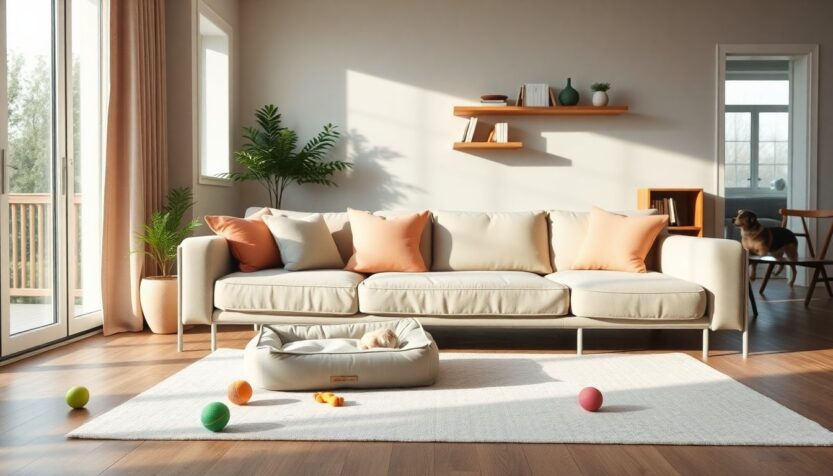Pets have become integral members of many families, offering joy and companionship, particularly to individuals living alone. Ensuring their safety within the home is essential. This article outlines practical steps to create a pet-friendly and secure living space.
First, it is important to consider the environment where your pets will thrive. Like young children, puppies and kittens are naturally curious and often explore everything they can find. A thorough examination of your home from their perspective is crucial to prevent accidents.
Creating a secure environment
Start by assessing common household items that may pose risks to your pets. For instance, certain plants can be toxic if ingested, making it vital to research their safety before introducing them into your home.
Additionally, store medications and cleaning supplies out of reach. Many household chemicals can be harmful or even fatal to pets. Installing childproof latches on lower cabinets can deter curious animals from accessing potential dangers. Sharp objects and fragile items should also be secured to prevent accidents, as playful pets can easily cause injuries.
Assessing the surroundings
A practical strategy is to get down to your pet’s level and observe potential hazards from their perspective. For instance, an open trash can may invite exploration. Using a trash can with a secure lid can help prevent pets from scavenging harmful items such as chicken bones or sharp objects.
Pet-proofing your kitchen
The kitchen can be filled with both treasures and dangers for pets. Ensure all food, especially those toxic to animals, is stored safely out of reach. Foods like macadamia nuts and xylitol, commonly found in sugar-free products, can be extremely harmful to dogs. It is advisable to avoid keeping these items in your home.
If you engage in crafting, make sure all supplies such as needles, yarn, and small objects are stored securely. These items can pose choking hazards or cause injuries. Additionally, be cautious of electrical wires, as pets often chew on accessible items.
Choosing the right flooring
Select flooring materials that are easy to clean and resistant to stains. Depending on your location, certain flooring options may be more suitable. For example, tile flooring is favored in warmer climates because it remains cool and is easy to maintain. However, hardwood or laminate may scratch easily, so consider using area rugs for added protection. While carpets can provide comfort for pets, they can also trap stains and odors.
Providing personal space
Every pet requires a designated space, whether it is a cozy bed, a crate, or a cat tree. Although they may enjoy snuggling with you, having their own area allows them to retreat and relax when needed. Recognizing that pets also need downtime is essential for their well-being.
If you live in a house, ensure your yard is secure with an appropriate fence. Some fences may have gaps that small dogs can squeeze through. In such cases, additional barriers like screening or Plexiglas can prevent escapes. Inside the home, using pet gates can confine pets to safe areas until they are trained and reliable.
Understanding your pet’s needs
First, it is important to consider the environment where your pets will thrive. Like young children, puppies and kittens are naturally curious and often explore everything they can find. A thorough examination of your home from their perspective is crucial to prevent accidents.0
First, it is important to consider the environment where your pets will thrive. Like young children, puppies and kittens are naturally curious and often explore everything they can find. A thorough examination of your home from their perspective is crucial to prevent accidents.1

